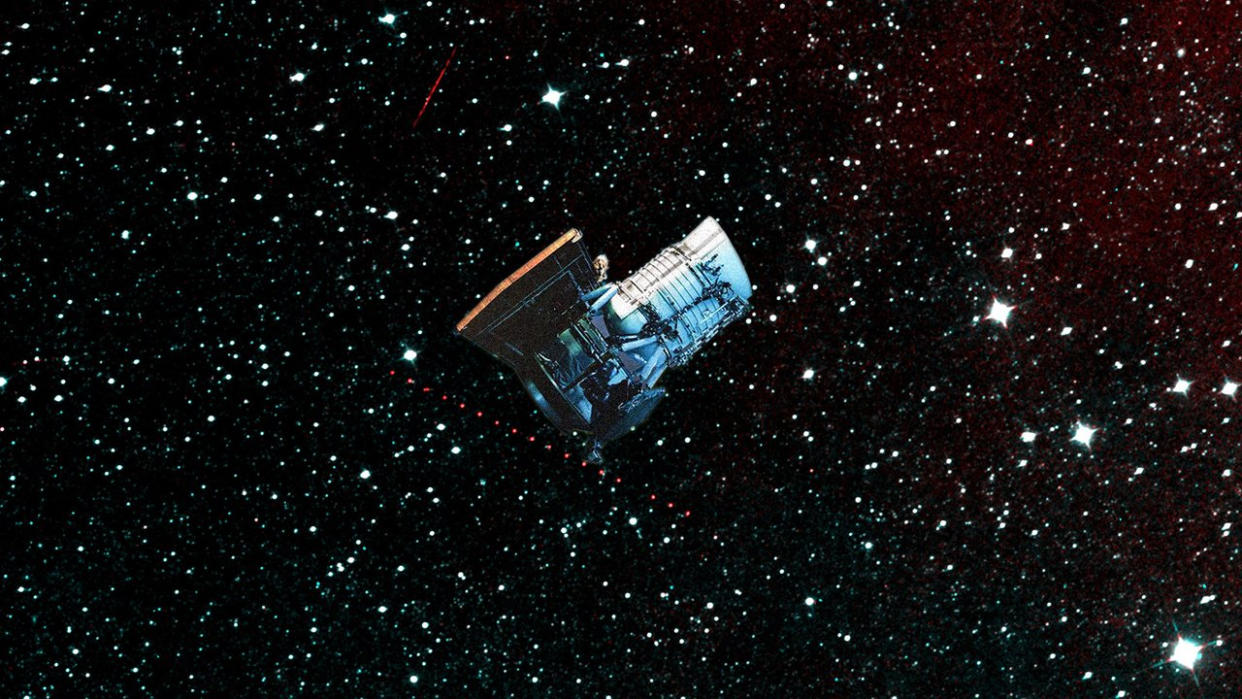Space weather will drag NASA's NEOWISE asteroid-hunting probe back to Earth in 2025

After more than a decade of hunting for asteroids and comets, the days of NASA's NEOWISE mission are officially numbered.
NASA's Jet Propulsion Laboratory in Southern California (JPL) just announced that the NEOWISE mission will come to an end within just a few years. JPL mission planners expect that solar activity will drag the space telescope out of orbit, and to a fiery death in Earth's atmosphere, by 2025.
"The mission has planned for this day a long time," Joseph Masiero, a planetary scientist at the California Institute of Technology and NEOWISE's deputy principal investigator, said in a statement.
Related: NASA's asteroid-hunting NEOWISE discovers trove of 114 objects (video)
NEOWISE is the current mission of the WISE ("Wide-field Infrared Survey Explorer") spacecraft, which launched in December 2009 to map the sky in infrared light, spotting distant stars and galaxies as well as near-Earth comets and asteroids. But WISE was always operating on limited time, and, in October 2010, the spacecraft ran out of the hydrogen it needed to cool its four infrared detectors.
That wasn't the end, however. NASA decided to shut down two of WISE's four detectors and refocus its observations on near-Earth objects, which it could still detect, on the new NEOWISE ("Near-Earth Object Wide-field Infrared Survey Explorer") Post-Cryogenic Mission. Although the spacecraft spotted numerous previously unseen asteroids and comets, including the first asteroid discovered that shared Earth's orbit, NASA ultimately shut down the telescope in February 2011.
But then, in December 2013, NASA woke the telescope from hibernation to give NEOWISE yet another life, this one dedicated to supporting planetary defense efforts. Since then, the mission has discovered 215 asteroids and comets, including C/2020 F3 (itself called NEOWISE), which in 2020 became visible to the naked eye.
RELATED STORIES:
— 8 ways to stop an asteroid: Nuclear weapons, paint and Bruce Willis
— Planetary defense: Protecting Earth from space-based threats
— Chelyabinsk meteor explosion over Russia 10 years ago was a planetary defense wake up call
Alas, the NEOWISE spacecraft now faces a far more existential threat than a coolant shortage. Solar activity is now in the rising phase of its 11-year-long cycle. The surge in solar flares and coronal mass ejections is heating up and expanding Earth's atmosphere, dragging the telescope lower and lower. Astronomers expect that, by 2025, the telescope will no longer be usable.
"After several years of calm, the sun is waking back up," Masiero said. "We are at the mercy of solar activity, and with no means to keep us in orbit, NEOWISE is now slowly spiraling back to Earth."

